at Missouri State Museum
Can’t make it to the Missouri State Museum? Planning a field trip and want to make the most of it? Either way, the Missouri State Museum strives to provide opportunities to connect you to the state’s history and natural resources.
Virtual Tours of the Missouri State Capitol
The Missouri state Capitol has a rich architectural history, and its hallways are filled with artwork. Visiting in person is an awe-inspiring experience.
Interested in visiting, but not able to plan a trip now? The Missouri State Museum has produced a series of videos highlighting common stops on the tour and the history of the Capitol.
School groups interested in the history of the Capitol can also request a virtual question-and-answer session with museum staff. To plan a session, please contact the museum’s education specialist at education.statemuseum@dnr.mo.gov.
For information about guided tours of the Capitol, click here or contact the Missouri State Museum Tour Desk at 573-751-4127.
|
Welcome to the Missouri State Capitol Missouri Governor Mike Kehoe welcomes visitors to the Missouri state Capitol. |
|
Missouri State Capital: St. Charles to Jefferson City Using the “Assembling of the First Legislature” painting as a launching point, this video explores the move of the capital city from St. Charles to Jefferson City. It also features the three capitol buildings built in Jefferson City to house the state’s seat of government. |
|
The Great Seal of the State of Missouri The symbols of Missouri, including the Great Seal, are included in the decorations and architecture of the building. This video highlights the history and symbolism of Missouri’s Great Seal and explores some of the places that symbols can be found throughout the building. |
| The Missouri state Capitol’s hallways are lined with half round paintings called lunettes. They feature the state’s history and resources. This video highlights some of the history behind the lunettes and the optical illusions that can be found in some of the paintings. |
| In 1936, Missouri artist Thomas Hart Benton completed one of his most famous works: the "Social History of the State of Missouri" in the House Lounge of the Missouri state Capitol. This video explores Benton’s mural and the state history depicted in the painting. |
|
Visitor Gallery House of Representatives The Missouri state Capitol is the seat of state government and houses the chambers of the House of Representatives and the Senate. This video explores some of the workings of Missouri state government and the art and decoration of the House Chambers. |
|
Builders of the Capitol envisioned “two great museums” on either side of the Capitol. Today, the Missouri State Museum works to fulfill that vision by creating exhibits, programs and more to engage visitors with the history and resources of the state. Learn more about the history of the museum and its continuing work in this video. |
Traveling Trunks
The Missouri State Museum offers educational traveling trunks to teachers, libraries, families and event coordinators to reserve for use as teaching tools. The museum’s goal is to help young scholars connect to Missouri’s history and its resources. There are six trunks to choose from, and each one offers hands-on reproduction items, books, topic information and other items that can be used to explore Missouri’s past and its environments.
Trunks may be borrowed for up to two weeks within 50 miles of Jefferson City. If outside the 50-mile radius, please contact the museum for options. It is the responsibility of the borrower to pick up and return the trunks to the museum between the hours of 9:30 a.m. and 4 p.m. Other than transportation, there are no fees to use the trunks.
To check on availability, contact the museum at 573-751-4523 or education.statemuseum@dnr.mo.gov.
PLEASE NOTE: To prevent possible spread of COVID-19 through surface transmission, trunks will be quarantined for a minimum of two weeks (14 days) between each checkout.
 |
Lewis and Clark Step into the shoes of famous explorers William Clark, Merriweather Lewis and their traveling companions. See examples of items they took with them and used for trade. Read about their adventures and the people they encountered along the Missouri River. You can even listen to music inspired by the Lewis and Clark journey! Lewis and Clark Trunk Content List |
 |
Civil War Explore the daily life of a Civil War era soldier. What did soldiers carry with them? What kind of foods did they eat? How did they write letters home and entertain themselves? Use replica artifacts to answer these questions and learn more about a day in the life of a Civil War soldier. Civil War trunk contents (two available): |
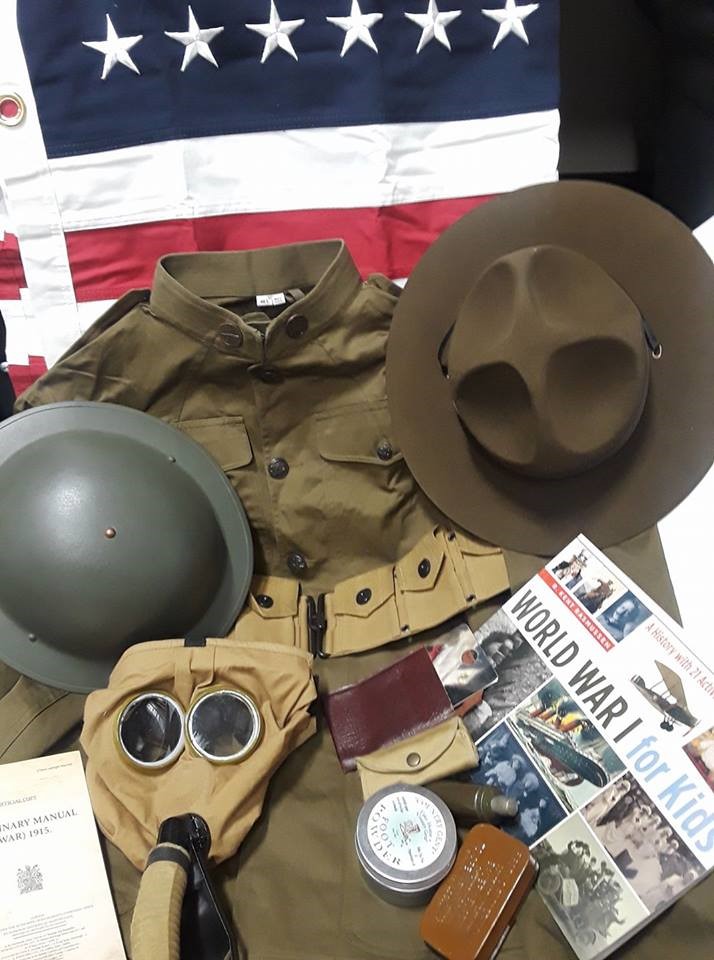 |
The Great War (World War I) Explore a day in the life of a WWI soldier. Use replicas to learn the difference between cold and warm weather uniforms. Discover how soldiers handled personal hygiene in the muddy trenches. Examine how they cared for their fellow animal soldiers on the front line. Soldiers carried all their belongings and equipment on their backs--piece together your own pack from the items in the trunk and see how heavy they really were! Great War trunk contents (two available): |
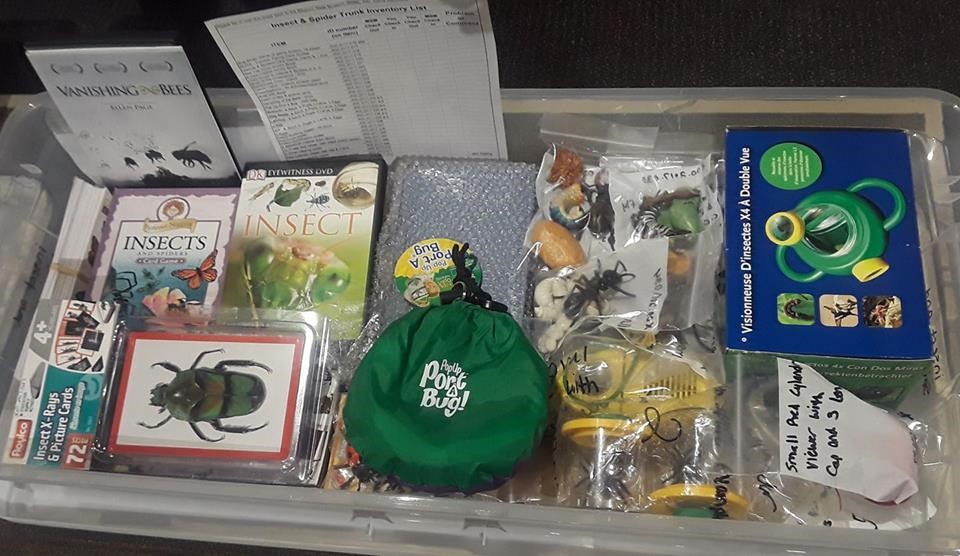 |
Insects and Spiders Take a look around your schoolyard. How many insects and spiders can you find? Use the tools provided to help you find and identify insects and spiders. Learn about what they eat and which ones are beneficial. This trunk helps connect students to nature and fosters respect and understanding for wildlife that is often seen in a negative light. Insects and Spiders Trunk Contents |
 |
Reptiles and Amphibians The slithery snakes and squishy frogs from this trunk have much to share! Play reptile bingo or count the ribs on a snake skeleton. Identify these Missouri animals and learn about their habitats. This trunk helps connect students to their environment and fosters respect and understanding for beneficial wildlife that is often seen in a negative light. Reptiles and Amphibians Trunk Contents |
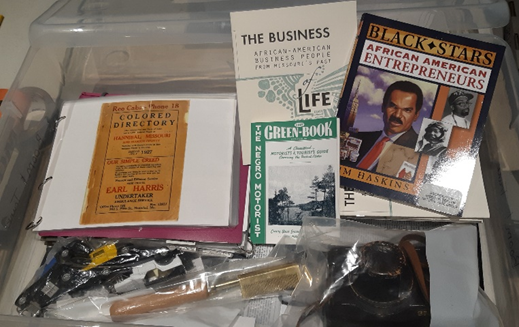 |
BOOM! The Rise and Fall of Missouri's Black Business Districts Learn about the legacy, impact and lives of Black Americans from the Civil Rights Movement. How were they able to travel through a segregated nation? What where some of businesses they built, and were those businesses successful? Use replica artifacts such as the Negro Motorist Green Book, an antique camera and diecast cars to answer these questions and learn more about the triumphs of Missouri’s Black business owners. BOOM! Trunk Contents |
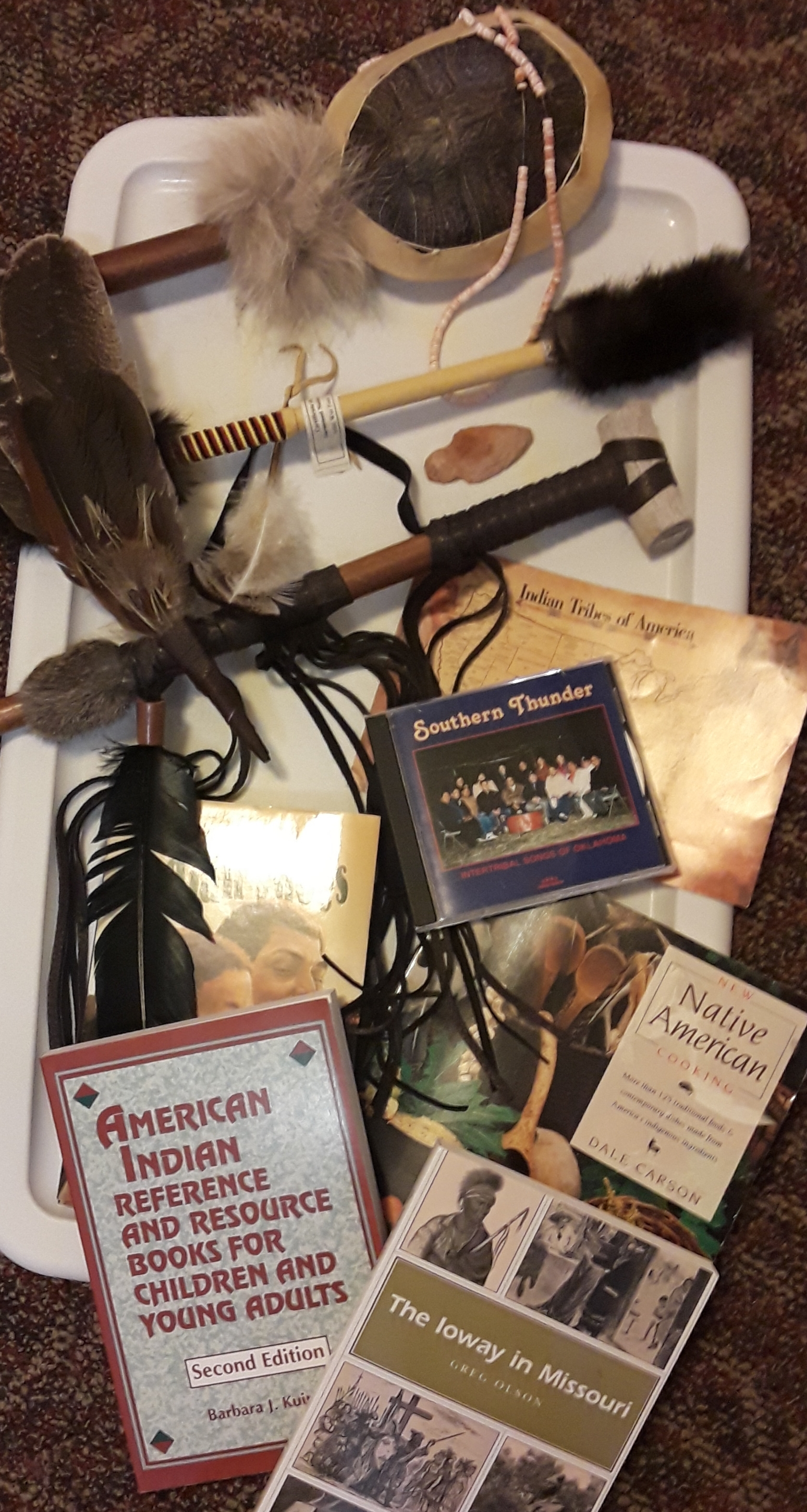 |
Missouri Native People Long before the land we now know as Missouri became a state, several groups of Indigenous people inhabited the area. Although they do not have large numbers present in Missouri today, they left an incredible and very important legacy. See just how large of an area the Osage inhabited, learn to make your very own talking stick, and cook native dishes using recipes included in the trunk. This trunk provides a connection to the diverse history of Missouri and increases cultural knowledge of the area. Whenever possible, Native-American-made products were purchased for use in this trunk. Missouri Native People: Fourth to Sixth Grade Lesson Plan |
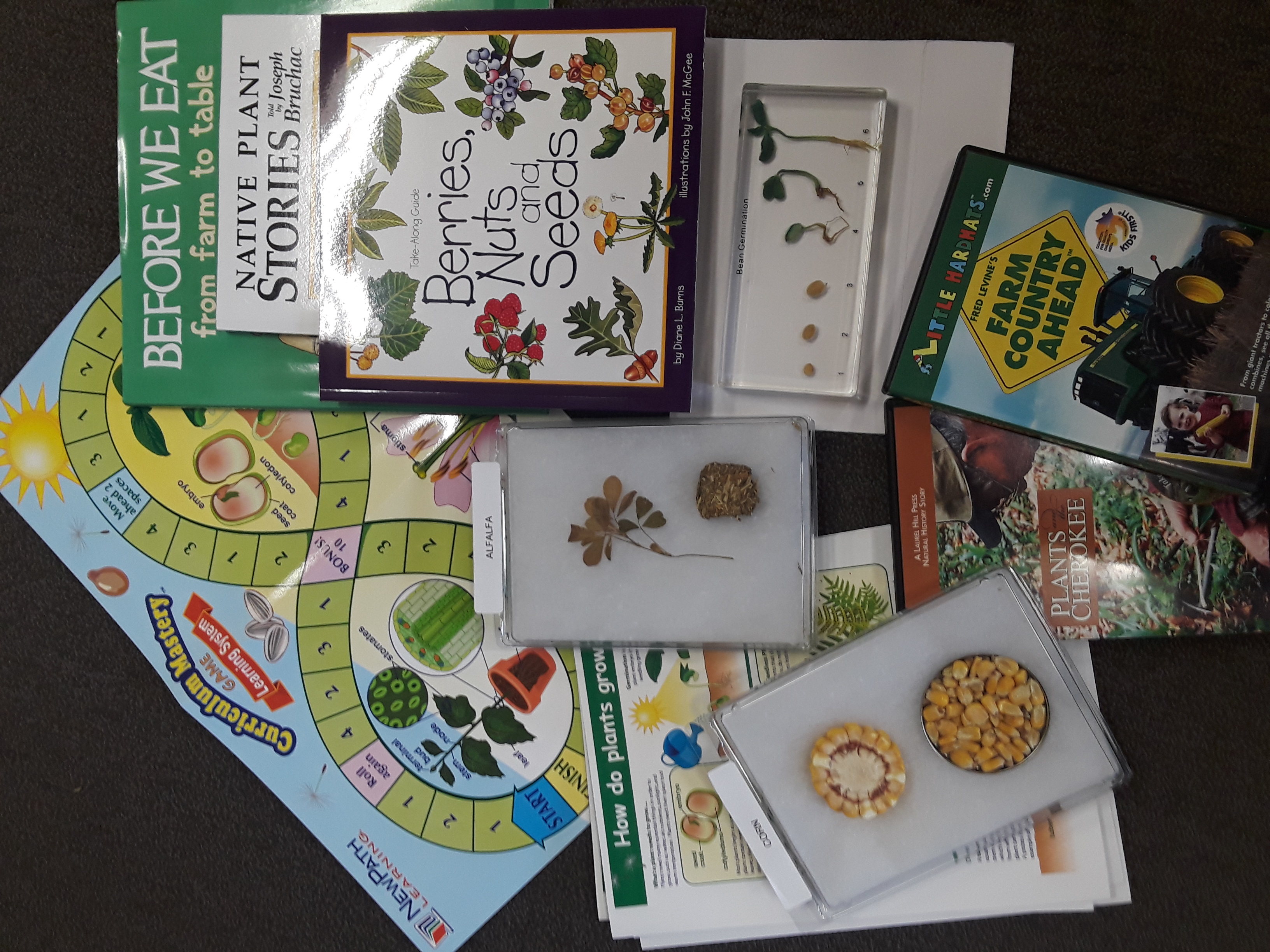 |
Deeply Rooted Have you ever wondered where the food you buy at the market comes from? How it's grown or how it gets to the store? What does a farmer do all day (and sometimes night!) on the farm? Find the answers to these questions and more with our Missouri-agriculture-themed traveling trunk, Deeply Rooted. Lesson plans, books, games and hands-on activities for a variety of ages are included. This trunk also pairs with the "Deeply Rooted" traveling exhibit. Pre-K Lesson Plan: Earthworms
|
|
Mystery Cemetery The field of archaeology is full of dirt-digging, mystery-solving, story-telling fun! Much like archaeologist do when analyzing a site, the Mystery Cemetery trunk allows you to put your critical thinking to the test and embark on your own fictional excavation. Note: This activity is based on the Mystery Cemetery project of the Archaeological Institute of America and best suited for grades six to 10. |
|
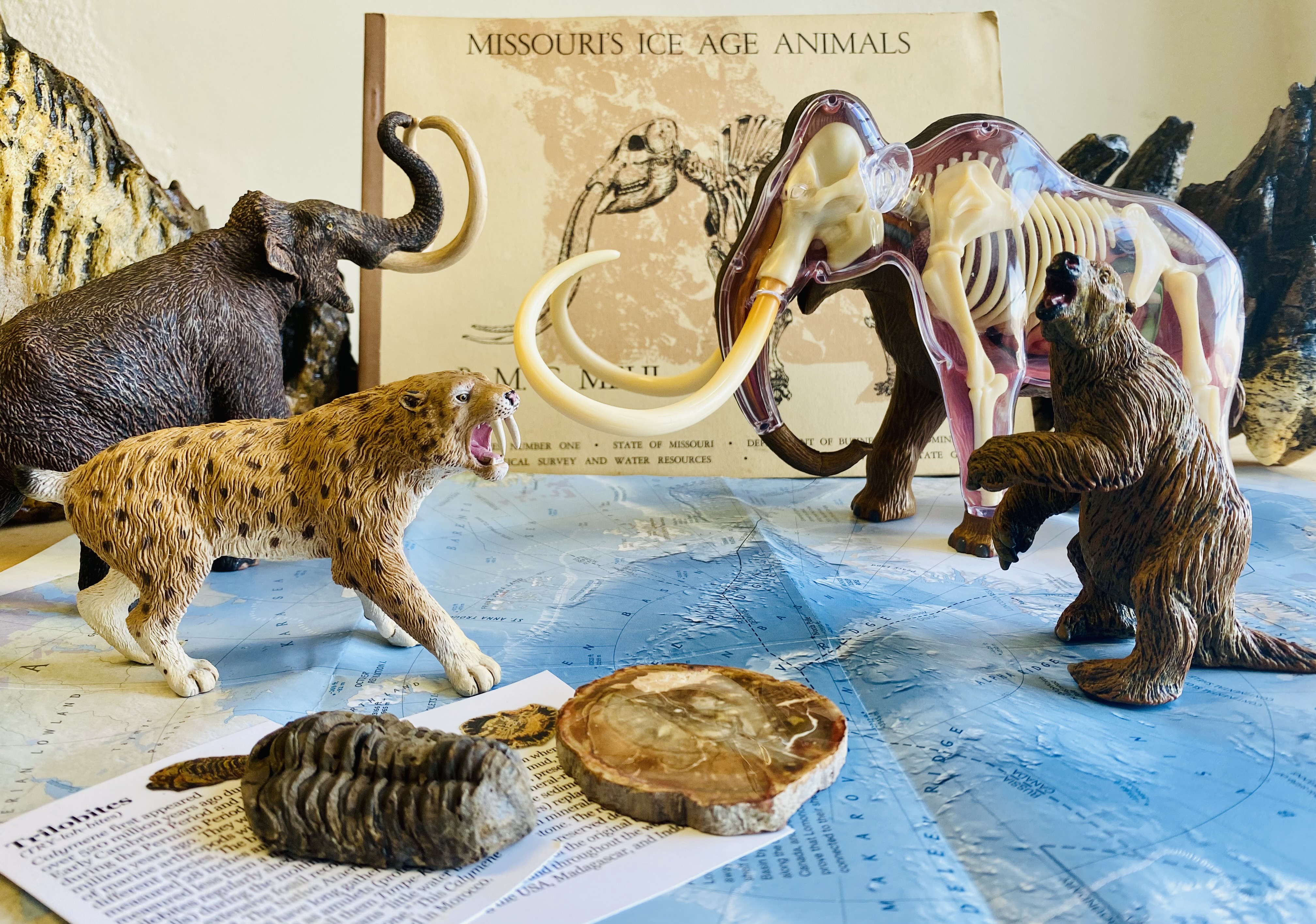 |
Prehistoric Missouri Step back in time to when mighty mastodons roamed the land, and explore Missouri’s prehistoric past! Using the Prehistoric Missouri trunk, students will learn about a time long before the discovery of written records and examine how the animals and natural landscape have changed over time. |
Traveling Programs
Can’t make it to the museum? We can bring programs to you. Traveling programs are available to schools and organizations within approximately 50 miles of Jefferson City. With advanced notice, museum interpreters can develop programs on Missouri’s history and resources to meet your educational needs and goals. As traveling programs are developed, brief descriptions will be listed below.
To learn more about the possibilities of traveling programs for your classroom, contact the museum at 573-751-4523 or education.statemuseum@dnr.mo.gov.
"Birds of Prey" Traveling Program
What do hawks eat? What do owls do during the day, and why? These are just a few of the questions answered by museum educators in our Birds of Prey outreach program. Students can get up close with raptor feathers and owl eggs and see exactly what is inside a “raptor pellet.” Request a visit to learn more about the species of prey birds that call Missouri home. Call or email to schedule a time for a museum interpreter to visit your classroom.
"Mammals of Missouri" Traveling Program
Imagine the amazing world of Missouri mammals without leaving your classroom or location. With hands-on items such as mammal furs, skulls and tracks, students can learn about some of the different types of mammals in our state and answer questions such as: “Who sleeps during the day?”, “Is a bat a mammal?” and “What is scat?” Call or email to schedule a time for a museum interpreter to visit your classroom.
Lesson Plans and Activities
Planning a trip to the Missouri state Capitol, the State Museum or Jefferson Landing State Historic Site? These guides, lesson plans and activities can help you prepare for and enhance your trip. Lesson plan activities can be done on-site or in the classroom.
The museum is working on developing additional resources. Please keep checking back to see what’s new.
Jefferson Landing State Historic Site Lesson Plans
- 1850s General Store: Cash, Barter and Credit, third through fifth grades
- Think like a Historian: Letters as Source Material, sixth through ninth grades
Missouri Capitol Lesson Plans
The Missouri Capitol building and artwork tell stories about Missouri’s history and resources. The following lesson plans help students and teachers discover those stories.
- Resources Hall Lunettes lesson plan, third and fourth grades
Activities
Visiting the Capitol or landing with small children? Explore, learn and enjoy with our family guides.
Also, be sure to check out the State Museum scavenger hunt.
Traveling Exhibits
The museum maintains a growing number of traveling exhibits that can be borrowed by schools, museums, libraries and other organizations. Our exhibits explore Missouri’s rich natural and cultural history. We are creating new exhibits and updating old exhibits regularly.
Exhibits are available statewide, though borrowers are responsible for picking up the exhibits and returning them to the museum. Traveling exhibits may be borrowed for three to nine months. Other than transportation, there are no fees to use the exhibits.
To learn more about our traveling exhibits and availability, contact the museum at 573-526-5454 or exhibits.statemuseum@dnr.mo.gov.
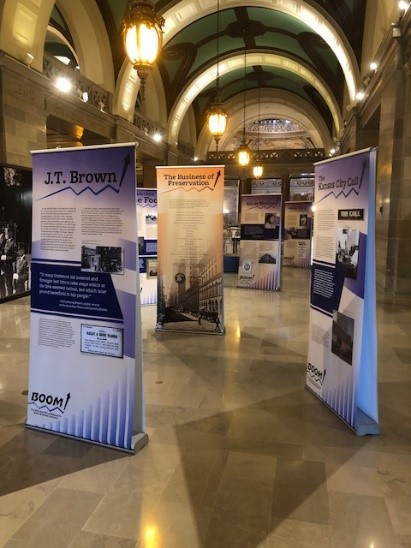 |
"BOOM! The Rise and Fall of Missouri’s Black Business Districts" Inspired by the Missouri State Parks-produced booklet “The Business: African-American Business People from Missouri’s Past,” "BOOM!" interprets the history of five Black business districts throughout the state. Due to segregation and racism, these business centers flourished, serving as the cornerstone of Black life, culture and survival from the late 19th century to the mid-20th century. However, integration, civil rights legislation and urban renewal caused them to crumble and disappear. |
 |
"Benton, A Social History of Missouri" Thomas Hart Benton’s “A Social History of Missouri” is an iconic mural located in the House of Representative’s Lounge in the Captiol. Now, experience the painting in your own community with this smaller “pop-up” version of the mural. Three pieces fit together to create a 70% scale of the painting. The exhibit offers a chance for people to view the legendary artwork without traveling to Jefferson City. |
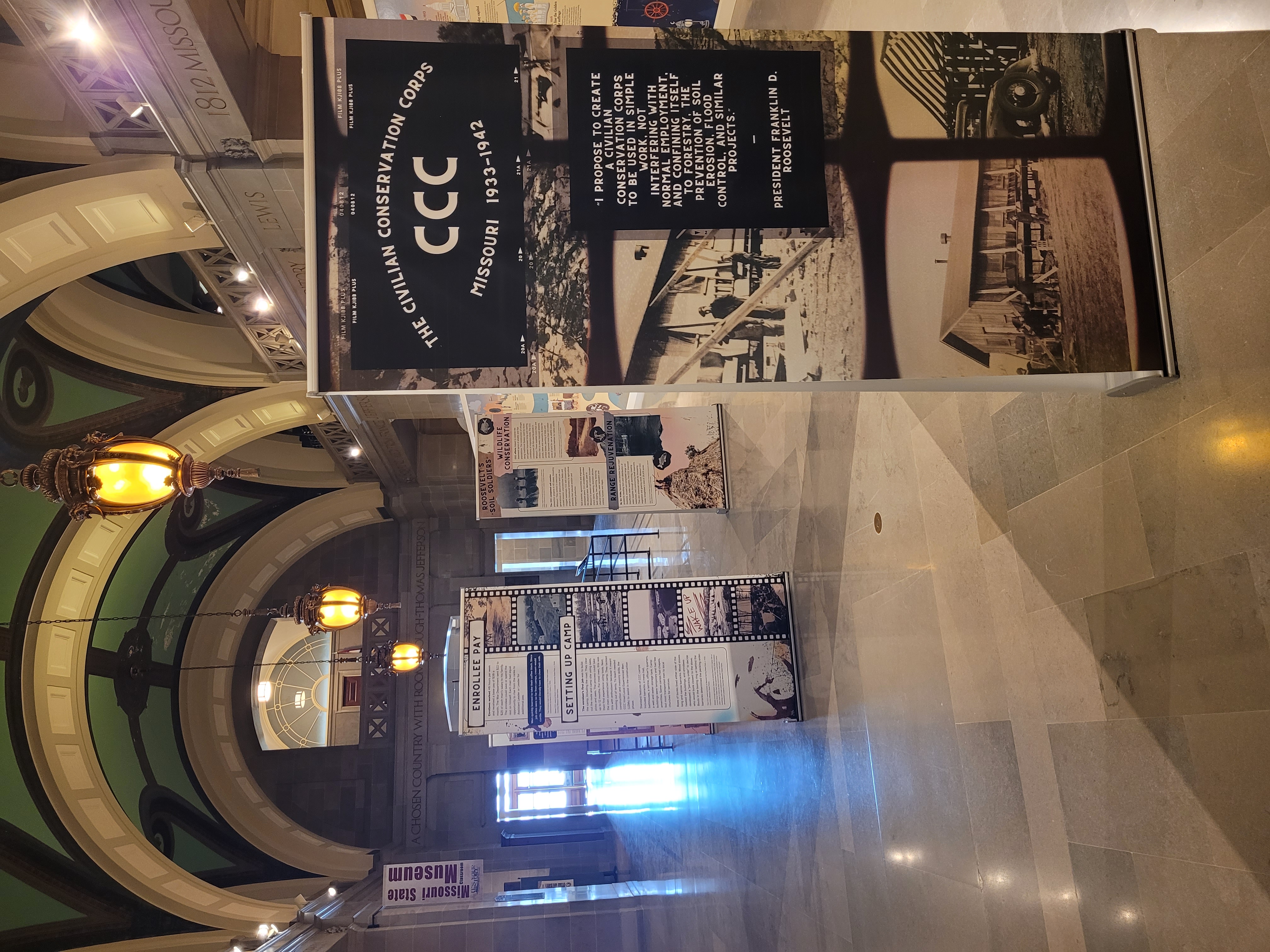 |
"The Civilian Conservation Corps in Missouri, 1933-1942" The Civilian Conservations Corps had a profound impact on Missouri's parks, forests and farmlands. Discover the the history of the program and its long-lasting legacy in our state. |
|
"Deeply Rooted: Stories of Missouri Farming" The roots of Missouri’s agricultural industry stretches over more than 3,000 years. It is an industry and a way of life for many Missourians. "Deeply Rooted" takes visitors on a journey through time and connects them to the past, present and future of farming in the state. |
|
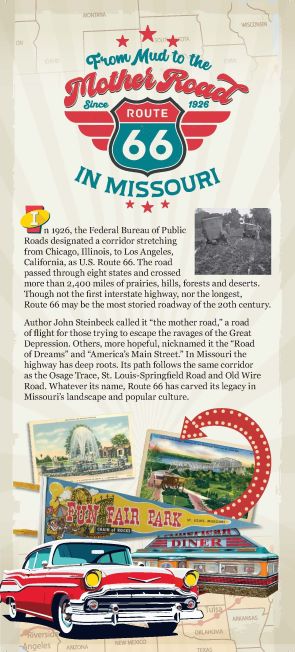 |
"From Mud to the Mother Road: Route 66 in Missouri" "From Mud to the Mother Road" commemorates a century of Route 66 in Missouri. Get your kicks on Route 66 and take a journey through Missouri history along this storied roadway. Learn about the route, the businesses it supported, and recent efforts to preserve its history. Designed for easy transportation, this exhibit features five interlocking aluminum frames with two-sided "pillowcase" graphic panels. |
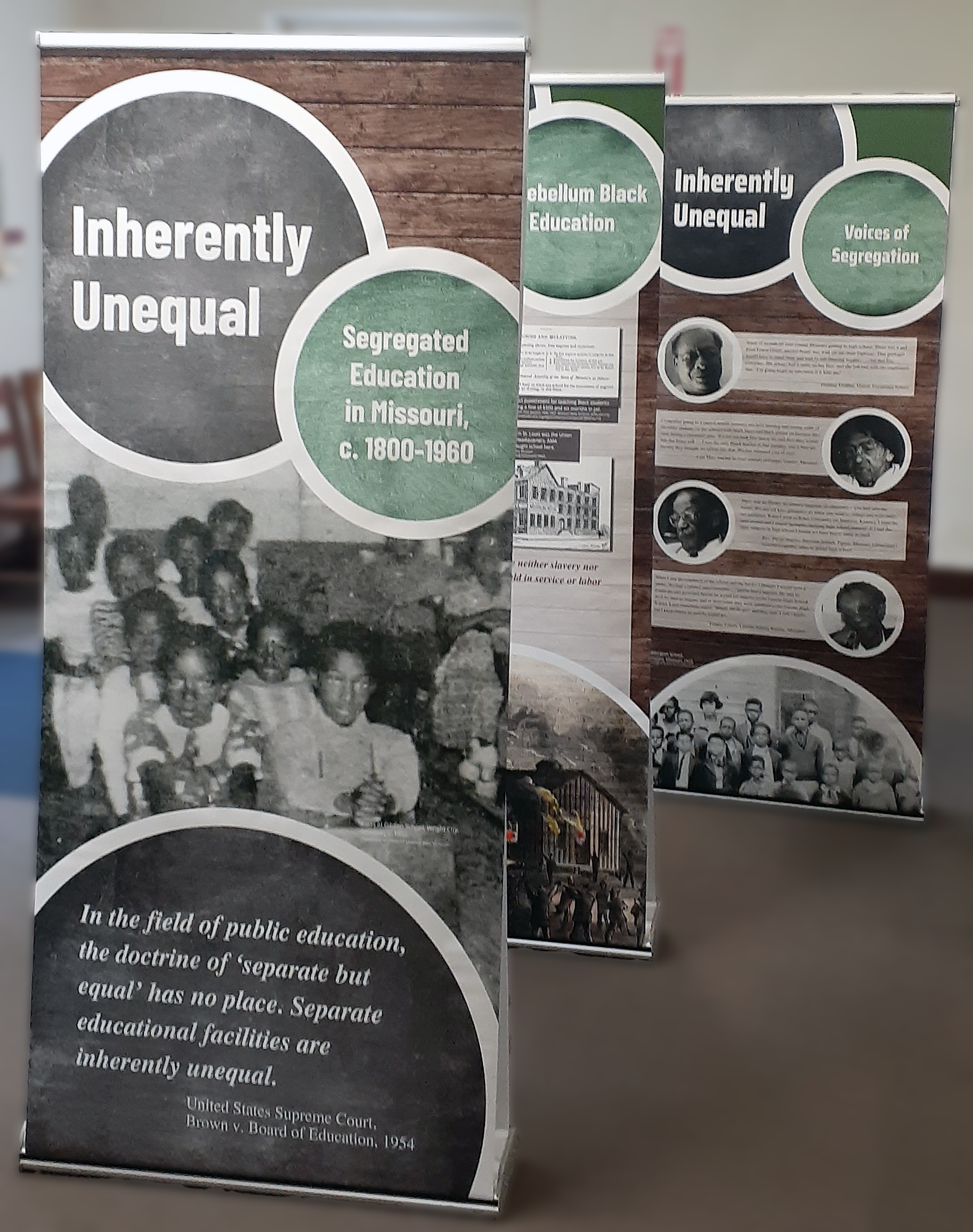 |
"Inherently Unequal: Segregated Education in Missouri, c. 1800-1960" Black Missourians too often found it difficult to access education in the 19th and early 20th centuries. This exhibit reminds us of the obstacles they faced, and the dignity and diligence with which many Black citizens sought to educate themselves in a system of inherently unequal schools. |






